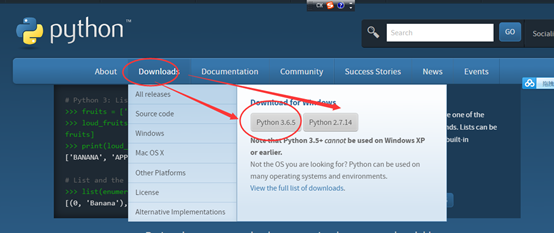python用于url解码和中文解析的小脚本(python url decoder)
# -*- coding: utf8 -*-
#! python
print(repr("测试报警,xxxx是大猪头".decode("UTF8").encode("GBK")).replace("\\x","%"))
注意第一个 decode("UTF8") 要与文件声明的编码一样。
最开始对这个问题的接触,来自于一个Javascript解谜闯关的小游戏,某一关的提示如下:
刚开始的几关都是很简单很简单的哦~~这一关只是简单的字符串变形而已…..
后面是一大长串开头是%5Cu4e0b%5Cu4e00%5Cu5173%5Cu7684这样的字符串。
这种东西以前经常在浏览器的地址栏见到,就是一直不知道怎么转换成能看懂的东东,
网上google了一下,结合python的url解码和unicode解码,解决方式如下:
import urllib escaped_str="%5Cu4e0b%5Cu4e00%5Cu5173%5Cu7684%5Cu9875%5Cu9762%5Cu540d%5Cu5b57%5Cu662f%5Cx20%5Cx69%5Cx32%5Cx6a%5Cx62%5Cx6a%5Cx33%5Cx69%5Cx34%5Cx62%5Cx62%5Cx35%5Cx34%5Cx62%5Cx35%5Cx32%5Cx69%5Cx62%5Cx33%5Cx2e%5Cx68%5Cx74%5Cx6d"
print urllib.unquote(escaped_str).decode('unicode-escape')
最近,我对firefox的autoproxy插件中的gfwlist中的中文词汇(用过代理的同学们,你们懂的)产生了兴趣,然而这些网址都是用url编码的,比如http://zh.wikipedia.org/wiki/%E9%97%A8,需要使用正则表达式将被url编码的中文字符提取出来,写了个小脚本如下:
import urllib
import re
with open("listfile","r") as f:
for url_str in f:
match=re.compile("((%\w{2}){3,})").findall(url_str)
#汉字url编码的样式是:百分号+2个十六进制数,重复3次
if match!=None:
#如果匹配成功,则将提取出的部分转换为中文
for trans in match:
print urllib.unquote(trans[0]),
然而这个脚本仍有一些缺点,对于列表文件中的某些中文字符仍然不能正常解码,比如下面这几行测试代码
import urllib
a="http://zh.wikipedia.org/wiki/%BD%F0%B6"
b="http://zh.wikipedia.org/wiki/%E9%97%A8"
de=urllib.unquote
print de(a),de(b)
输出结果就是前者可以正确解码,而后者不可以,个人觉得原因可能和big5编码有关,如果谁知道什么解决办法,还请告诉我一下~
以下是补充:
de(a).decode(“gbk”,”ignore”)
de(b).decode(“utf8″,”ignore”)
這樣你可以得到這些字串的unicode編碼。
你用的unquote不是decoder, 你需要作必要的decode和encode。我一直用utf8作我默認環境的,我覺得你大概用的gbk吧,所以後者的解碼你那邊失敗了。猜編碼是很累的事情,如果大家都用utf8倒也好,但是有些人習慣了gb。
http://yac163.svn.sourceforge.net/viewvc/yac163/trunk/yac163-nox/Pic.py?revision=198&view=markup
參考我這個很古老code裡面的#102-147行 給每個decode和encode調用加上(…,”ignore”)。
def strdecode( string,charset=None ):
if isinstance(string,unicode):
return string
if charset:
try:
return string.decode(charset)
except UnicodeDecodeError:
return _strdecode(string)
else:
return _strdecode(string)
def _strdecode(string):
try:
return string.decode('utf8')
except UnicodeDecodeError:
try:
return string.decode('gb2312')
except UnicodeDecodeError:
try:
return string.decode('gbk')
except UnicodeDecodeError:
return string.decode('gb18030')
def strencode( string,charset=None ):
if isinstance(string,str):
return string
if charset:
try:
return string.encode(charset)
except UnicodeEncodeError:
return _strencode(string)
else:
return _strencode(string)
def _strencode(string):
try:
return string.encode('utf8')
except UnicodeEncodeError:
try:
return string.encode('gb2312')
except UnicodeEncodeError:
try:
return string.encode('gbk')
except UnicodeEncodeError:
return string.encode('gb18030')
